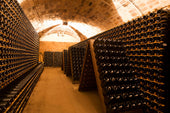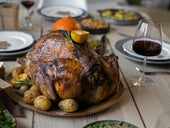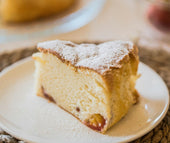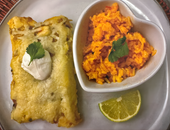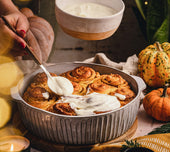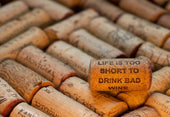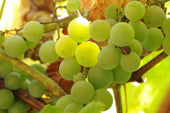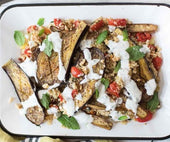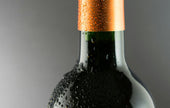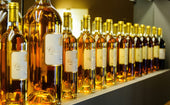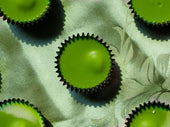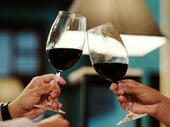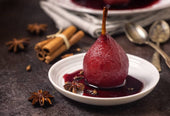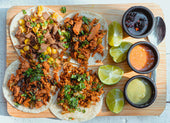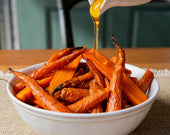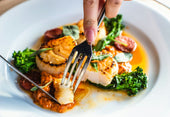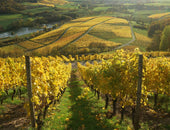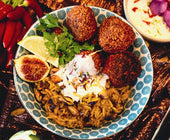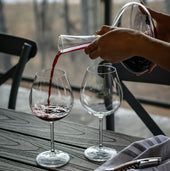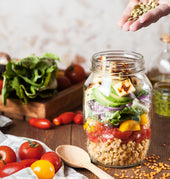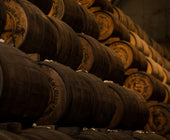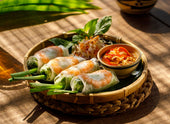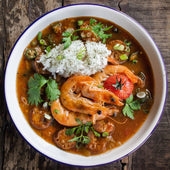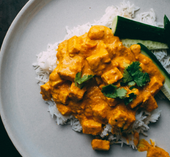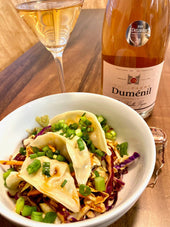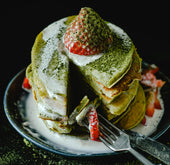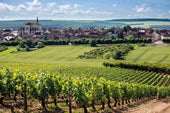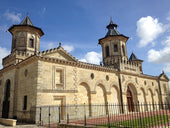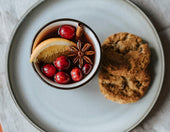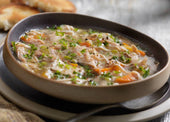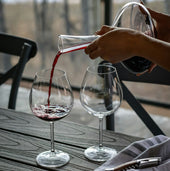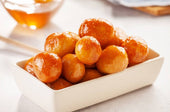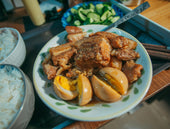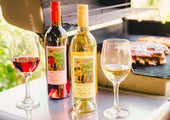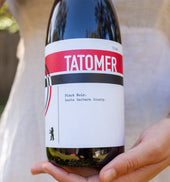
Festive Holiday Food & Wine Pairings: The International Edition Part II

By Iris Rowlee
Jamaica: Sorrel Punch, Goat Curry with Gungo Peas & Rice and Caribbean Style Ham
While there isn’t much in the way of traditional wine making to speak of on the beautiful island nation of Jamaica, there is a strong passion for local spirits and a unique style, or sub category of aromatised, fortified “tonic wines”. Although a remnant of colonial England’s fascination with “health” tonics, tonic wines have become an intertwined, unique part of Jamaica's national culinary and cultural identity. Holiday cakes are seasoned with it, holiday drinks are spiked with it, dancehall stars sing their praise of it.
There is one main company that has the market on most of Jamaica’s brand name alcohols, J. Wray & Nephew Ltd. It makes 90% of rum consumed in Jamaica, and a large number of tonic and flavored wines, including the island’s best selling wine, Red Label Wine, which if you hear someone reference Jamaican red wine in a recipe or as a beverage, it would be the likes of this. It’s a sweet and cinnamony aperitif wine, often called for in Christmas dessert recipes. One of the oldest on the market, Sanatogen Tonic Wine, is round, rich with plum and cherry flavors. Jamaican ginger wine like Colbeck’s, in which grape wine is infused with ginger flavor is also popular.
Jamaican roots tonic wines highlight local traditions of using the roots (and other parts) of medicinal plants to make tonics aimed at curing health issues, giving clarity and sustaining stamina. Baba Roots Tonic Wine, created some years ago by a Rastafarian, became wildly popular among the Dancehall crowd and set off a roots tonic craze with younger audiences that were already into the regular tonic wines. Many followed, like Real Vibes and Lion Pride Roots Tonic Wine as well a bevy of roots tonics geared at personal, err, performance goals like Magnum, Pump It Up, Pure Stud, and Put-It-Eeen. But I digress, it's the holidays and these are family affairs afterall.
Keeping in mind that Christmas in Jamaica is no chilly time, the national holiday drink is a sort of spiced, tart, herbal iced tea called Sorrel Punch. The main ingredient is Roselle a type of hibiscus flower originally from West Africa but brought to the island during the years of the slave trade. The flower is in bloom in December and with the addition of some ginger, cinnamon, pimento, and after a good soak and addition of ice the tea is good to go, although often sugar, Jamaican white rum or a red tonic wine is added for good measure and sweetness.
Curried goat, a spicy, aromatic dish is a holiday favorite, as is roast chicken. The usual side of red beans and rice is replaced by the fresh Jamaican Gungo or Pigeon Peas with rice, as this tropical legume is in the peak of its season. Christmas hams are a mainstay, garnished in the Caribbean style with pineapple, cherries, and cloves. Fruitcakes soaked in Jamaican red wine and rum, and spiked with booze soaked fruit pieces is the classic Christmas dessert that doubles as a stiff drink.
Jamaica, has the unique claim to fame, of being the country with the most churches per square mile in the world, so they go big during the holidays. Attending festive Christmas fairs called Grand Markets is a holiday tradition, as well as masquerade parades called Jonkanoo. Christmas morning calls for putting on your best attire and heading to service at one of the many places of worship where celebratory singing, clapping and dancing is often accompanied by steel drums and the traditional holiday songs are given a Carribean tune. Feasting with friends and family follows and continues the next day. On Boxing Day, Jamaicans look forward to the annual, world famous Dancehall show Sting, (which because of Covid, will be held virtually) as well as the The National Pantomime Performance (held every year since 1941) which this year is fittingly called “Nah Give Up”.
Curried Goat with Pigeon Peas & Rice: Bedrock, California, Syrah 2018
Caribbean Style Ham: Gunderloch, Jean Baptiste, Kabinett Riesling, Rheinhessen 2018
Bethlehem, Palestine: Qidreh and Maamouls
When I think of Christmas traditions around the world, I can’t help but ponder what customs look like today in the biblical birthplace of Christ, the ancient city of Bethlehem. About six miles south of Jerusalem in the Palastinian West Bank, Bethlehem is encircled by a separation wall. Bethlehem, named for the fertile arable land here, means “house of bread” in Hebrew and was a reference to the earlier Canaanite fertility god Lehem. Of the population of about 25,000 Bethlehemis, Christians constitute a nominal but important presence in a city that used to be home to many of their faith.
In the heart of the city is Manger Square, home to the 6th century Church of the Nativity, a major point of pilgrimage for Christians. The church was built by Romans around the Grotto of the Nativity where Jesus is thought to have been born. A silver star inlaid in the ground marks the exact spot. Christmas celebrations in town revolve heavily around here. They hold multiple elaborate masses on Christmas Eve with copious amounts of frankincense burnt, an homage to one of the wise men’s gifts to the baby Jesus. The midnight mass in particular draws a big crowd including local people of other faiths. The streets in the area are decorated with lights and Manger Square is adorned with a big traditional Christmas tree every year with a lighting ceremony earlier in the month. A large Nativity scene completes the look and the ambience is completed by people singing Christmas carols. On Christmas Eve day there is a Christmas parade that marches in the area around the square. This is a very long standing tradition in the area and in addition to the expected Christmas fare includes a brigade of Bagpipe players, a tradition left over from the time period when the British army controlled the area in the first half of the 1900s. The many local handicraft, spice and sweets tourist shops turn up their holiday flare and locals can be seen dressed as Santa Claus handing out sweets to children.
Like most everywhere else in the world, a meal with loved ones is the most integral part of the occasion and in addition to good food, Palestinian Christians enjoy a good drink. On the outskirts of Bethlehem sits the Cremisan Monastery, built on the ruins of a 7th century Byzantine monastery of the same name, by Roman Catholic Salesian monks, an order established by Father or Don Giovanni Bosco, an advocate for orphans. It is surrounded by vineyards as well as extensive historic terraces with olive groves, planted centuries ago, that the monks still make oil from. Its winery, Cremisan Wine Estate, was founded in 1885 by an Italian named Father Antonio Belloni, a missionary who’d dedicated his services to working with orphans and paired up with the like minded Salesians. He and the monks started making wine for use by the local churches from the grapes indigenous to the area and employed local residents as well. Profits were used to fund two local orphanages Father Belloni had started. To this day profits are still used to help orphans, a seminary, and the monks work with production and bottling.
Their winemaker since 2015, Fadi Batarseh, is revitalizing many of the ancient native grape varieties of the area and receiving praise from wine critics. Historical scholars have pointed out that these are the types of grapes that would have been drunk in Jesus’ time. One of the stars of the estate is the red grape Baladi which means “of the country” or “native” in Arabic is a berried, woodsy medium bodied number that has a history in the area thought to go back to biblical times. They make wine, as well as a coveted, aged Brandy from Dadouki, a complex, mineral driven white grape thought to have originated in Armenia and migrated to the area in ancient times. They make another white wine that is a crisp, zesty blend of equal parts Hamdani and Jandali, two more grapes native to the area.
The monastery is named for the surrounding valley, Cremisan, one of the area's last green zones. Cremisan comes from the Hebrew words Kerem Zan or Vineyard of Zan, Zan being a name for a local grape, exhibiting the area’s longstanding connection with viticulture. The estate, including a convent and school, is now directly split by the separation wall between the West Bank and Jerusalem with some grapes coming from the now Israeli side. While breaking bread and wine they have a mantra of "cultivating peace through the vine."
The classic Palestinian Christmas main course is Qidreh lamb meat, chickpeas and rice cooked traditionally cooked in a wood fired oven and served with leban, a thick style yogurt. This would probably pair well with a bottle of Baladi.
Christmas cookies are always popular like maamouls, a cookie made of semolina, scented with orange blossom water and filled with sweet date paste. Arak, an anise aperitif, found locally produced, is a favorite before or after meal sipper. A final offering when visiting someone’s house is coffee, usually served in very small cups, as it’s made very strong, freshly ground with a couple cardamom seeds for aromatics.
*Cremisan Monastery pictured above. Photo Credit: VisitplatestineLamb Qidreh: Michele Chiarlo, “Tortoniano”, Barolo DOCG 2013
Maamoul Cookies: Jaillance Cuvée Impériale Clairette de Die

This article was contributed by Iris Rowlee. She is a Court of Masters certified Sommelier, a Vinitaly International Academy Italian Wine Ambassador, and a 3iC Certified Educator.


